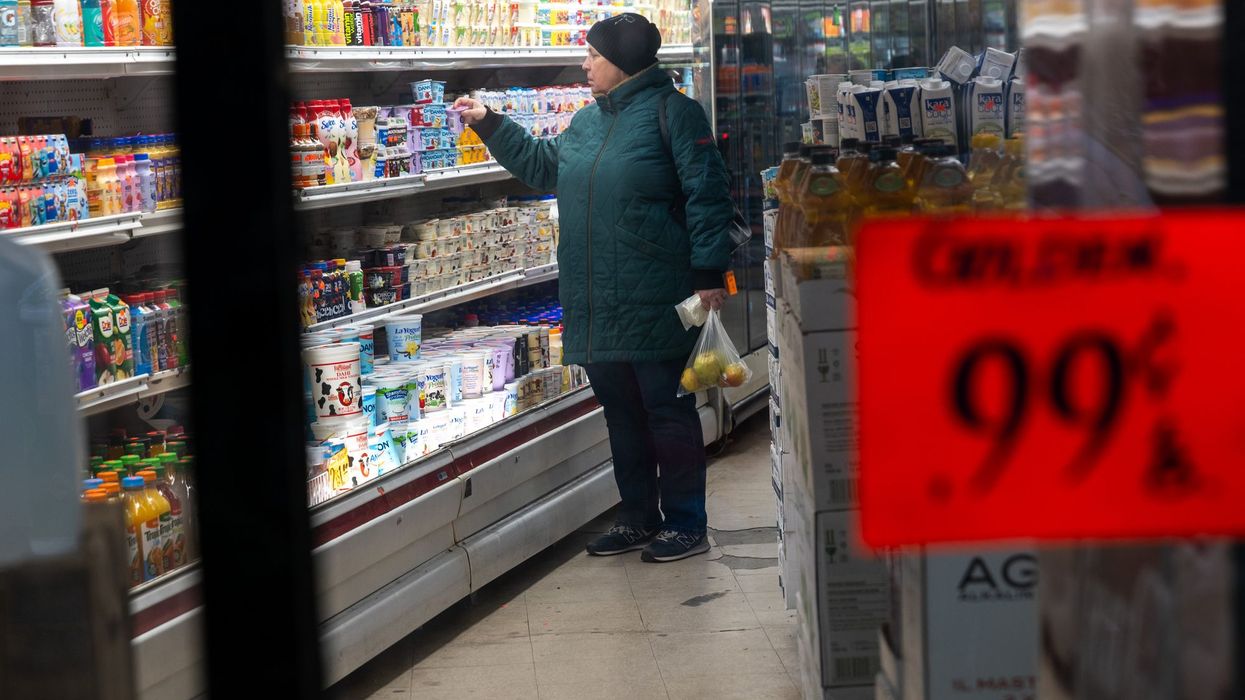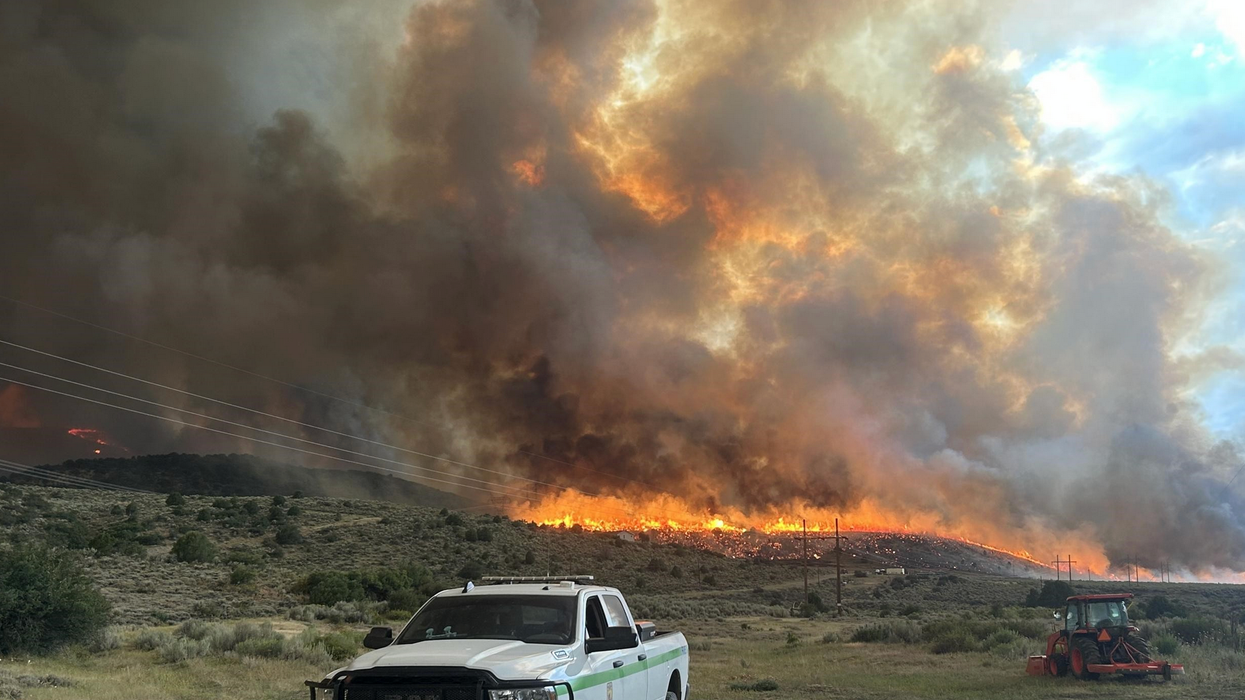September, 08 2021, 01:08pm EDT

New USDA Data: 38 Million Americans (9 Percent More than 2019) Suffered from Food Insecurity in 2020
First Complete Government Calculation of 2020 Hunger Surge
12 Million U.S. Children Were Food Insecure, also a 9-Percent Increase
Spending on USDA Domestic Food Aid Reached Historic High in 2020
Advocates: “Boost in Federal Safety Net the Top Reason that Mass Food Hardships Didn’t Turn into Mass Starvation”
Safety Net Was a “Giant Food Life Preserver”
WASHINGTON
Thirty-eight million Americans struggled against hunger one or more times in 2020, a nine-percent increase over the 2019 level of 35 million, according to data released today by the U.S. Department of Agriculture (USDA).
This is the first complete federal data to formally document the full extent of hunger and food hardship, also known as "food insecurity," during the first year of the pandemic. The number of U.S. children suffering from food insecurity also soared to 12 million in 2020, compared to 11 million in 2019, also a nine-percent increase.
Since the start of the pandemic in 2020, the federal government has also used a different methodology, the Household Pulse Survey, to study how many Americans don't have enough food over seven-day periods of time. That methodology has proven that the number of Americans facing food hardship declined when the federal government increased food and cash assistance to struggling families by significant amounts at varied times in the last year and a half.
A different USDA report just found: "Spending on USDA's domestic food and nutrition assistance programs in Fiscal Year 2020 reached a historical high of $122.1 billion."
In response to these findings, Joel Berg, CEO of Hunger Free America, a nationwide direct service and advocacy organization, released the following statement:
"The new federal data tells us two things. First, while hunger was already a massive, systemic problem in all 50 states before COVID-19 hit the U.S., domestic hunger surged during the pandemic. Second, while tens of million of Americans suffered mightily from food hardship in 2020 - and are still suffering mightily - the nation avoided mass starvation mostly because the federal government stepped in to dramatically increase food and cash aid. This safety net was a giant food life preserver. Given that the pandemic is far from over, we need that aid to continue, as a down payment on the even bigger investments needed to create jobs, raise wages, and ensure an adequate safety net so we can finally end hunger in America once and for all."
Hunger Free America is a nonpartisan, national nonprofit group working to enact the policies and programs needed to end domestic hunger and ensure that all Americans have sufficient access to nutritious food.
(212) 825-0028LATEST NEWS
Watchdog Celebrates Victory Over Instacart Pricing Scheme—But Says Broader Corporate Abuse Remains
"Instacart is far from the only corporation using AI technologies to determine exactly how much profit they can extract from their customers by overcharging them," said the executive director of Groundwork Action.
Dec 22, 2025
The watchdog group that exposed Instacart's artificial intelligence pricing scheme is rejoicing after the company announced on Monday that it was ending the controversial program.
Earlier this month, Consumer Reports joined the Groundwork Collaborative and More Perfect Union to report that the grocery shopping app—which calls itself the "largest online grocery marketplace in North America"—was using the AI pricing software Eversight to charge up to 23% more for some customers than others for the same items, subjecting users to a "pricing experiment" that could cost them as much as $1,200 extra each year.
The Federal Trade Commission (FTC) took notice of the report, saying it was "disturbed" by the findings, and launched an investigation on Thursday, which caused the company's stock price to plummet by about 7%. It also attracted attention from members of Congress, including Senate Minority Leader Chuck Schumer (D-NY), who demanded government action on what he called "shakedown pricing."
Instacart agreed that same day to pay the FTC $60 million in a settlement for what the commission said was "a variety of deceptive tactics that misled consumers and caused them to pay more in fees." These included falsely advertising "free delivery" to consumers on their first order, implying that customers would receive a full refund if they were dissatisfied with their delivery, and failing to disclose membership charges.
The settlement does not mention Instacart's use of AI pricing experiments, but on Monday, the company said it would hit the brakes on that as well, following customer backlash.
"Effective immediately, Instacart is ending all item price tests on our platform. Retailers will no longer be able to use Eversight technology to run item price tests on Instacart," the company said in a statement. "Now, if two families are shopping for the same items, at the same time, from the same store location on Instacart, they see the same prices—period."
While it acknowledged that the pricing scheme "missed the mark for some customers," the company maintains that it was not using "dynamic pricing or surveillance pricing" and that it was not changing prices "based on supply or demand, personal data, demographics, or individual shopping behavior."
Alex Jacquez, Groundwork's chief of policy and advocacy, celebrated on social media that "Instacart has ended all item pricing experiments on its platform," calling it a "big win for consumers."
Groundwork Action's executive director, Lindsay Owens, likewise took pride in the fact that "once we pulled back the curtain on Instacart’s hidden pricing experiments, the company had no choice but to close the lab," but also said "it shouldn’t take investigative research, public outcry, and the threat of FTC action to convince companies not to treat consumers like lab rats."
"Instacart is far from the only corporation using AI technologies to determine exactly how much profit they can extract from their customers by overcharging them," she added.
Though the investigation did not find evidence that Instacart was using these methods, other companies—including Amazon, Delta Air Lines, and Home Depot—have been accused of fluctuating prices for consumers based on ZIP code or income level.
Owens said, "It’s time for regulators to put a stop to corporate pricing schemes and take action to restore fair, predictable, and transparent pricing.”
Keep ReadingShow Less
'The Law Must Be Enforced': Epstein Survivors Speak Out Against Trump DOJ Cover-Up and Delay
"The Trump administration is failing to follow the law by not releasing countless files and failing to redact the identities of survivors," said Rep. Pramila Jayapal. "This is not justice."
Dec 22, 2025
Some victims of late billionaire sex offender Jeffrey Epstein are slamming the Trump administration for continuing to delay the full release of files related to the federal case.
In a statement released Monday, the Epstein survivors called out the US Department of Justice (DOJ) for releasing only "a fraction of the files" demanded by law, adding that many of the files released so far have been "riddled with abnormal and extreme redactions with no explanation."
The survivors noted that the DOJ's actions appear to violate a law passed by US Congress and signed by President Donald Trump last month mandating the department release "all unclassified records, documents, communications, and investigative materials in DOJ's possession that relate to the investigation and prosecution of Jeffrey Epstein" by December 19.
"Grand jury minutes, though approved by a federal judge for release, were fully blacked out," they said, "not the scattered redactions that might be expected to protect victim names, but 119 full pages blacked out. We are told that there are hundreds of thousands of pages of documents still unreleased. These are clear-cut violations of an unambiguous law."
The survivors also said that the DOJ had left them completely in the dark about the release of the files, claiming that "there has been no communication with survivors or our representatives as to what was withheld from release, or why hundreds of thousands of documents have not been disclosed by the legal deadline, or how DOJ will ensure that no more victim names are wrongly disclosed."
They then demanded that members of Congress, nearly all of whom voted in favor of the Epstein Files Transparency Act, engage in vigorous oversight of the DOJ's actions, "including hearings, formal demands for compliance, and legal action" to force the department to follow the law.
"Survivors deserve truth," they concluded. "Survivors whose identities are private deserve protection. The public deserves accountability. And the law must be enforced."
Rep. Pramila Jayapal (D-Wash.) applauded the survivors for speaking up in the face of the Trump DOJ's disregard of the law.
"This statement from 18 Epstein survivors is spot on," she wrote in a social media post. "The Trump administration is failing to follow the law by not releasing countless files and failing to redact the identities of survivors. This is not justice."
Reps. Ro Khanna (D-Calif.) and Thomas Massie (R-Ky.), the two lawmakers who led efforts to pass the Epstein Files Transparency Act this year, said on Sunday that they are looking into potentially holding US Attorney General Pam Bondi in contempt for her department's failure to release the Epstein files.
In an interview with the Washington Post, Khanna explained that holding Bondi in contempt would not require any action by the US Senate and would take effect just by passing with a simple majority in the House of Representatives. Khanna said that the House would likely give Bondi a 30-day grace period to comply with the law and would then hit her with fines for every day where the Epstein files remain under wraps.
Keep ReadingShow Less
'Blatant Act of Retaliation': Trump Denies Colorado Request for Fire, Flooding Disaster Relief
Coloradans' "courage, strength, and willingness to help one another is unmatched—values that President Trump seems to have forgotten," said Gov. Jared Polis.
Dec 22, 2025
Top Democratic officials in Colorado are among those condemning President Donald Trump's denial of two disaster relief requests from Gov. Jared Polis—his latest action in a state that critics say he is retaliating against for its prosecution of a former county clerk who was involved in election denial efforts in 2020.
After the White House denied the requests for Trump to declare major disasters in parts of Colorado that experienced the Lee and Elf fires in August and flooding in October—a move that would unlock Federal Emergency Management Agency (FEMA) funding to help with recovery efforts—Polis joined other Democratic leaders in calling on Trump to reconsider and accusing him of playing "political games."
"One of the most amazing things to witness as governor has been the resilience of Coloradans following a natural disaster," said Polis. "Their courage, strength, and willingness to help one another is unmatched—values that President Trump seems to have forgotten. I call on the president’s better angels, and urge him to reconsider these requests. This is about the Coloradans who need this support, and we won’t stop fighting for them to get what they deserve. Colorado will be appealing this decision."
The governor was joined by Democratic Sens. Michael Bennet and John Hickenlooper in speaking out against the denial.
Polis made the requests in late September and last month, noting in his first request that Rio Blanco County, which both fires ripped through, has an economy driven "largely by energy production" at the Piceance Basin.
"This local industry is powered by two local utility providers who have sustained over $24 million in damages to their infrastructure," his office said. "Without support to recover local utility infrastructure, stalled production risks the local economy, major rate increases on Coloradans, and local economic collapse."
In November, Polis noted that FEMA had confirmed $13.8 million in damages to public infrastructure from flooding in several western counties, with roads and bridges particularly affected.
Communities also have ongoing debris removal needs, sewer system failures, and damages to essential drinking water and wastewater infrastructure.
The Stafford Act authorizes the president to declare a major disaster in order to unlock additional federal funding to respond to floods and other emergencies.
Trump has sought to reduce federal funding that goes to states for emergency management—denying at least 12 requests from states between January-October, with Democratic-led states facing many of the denials.
He has overtly politicized disaster relief, announcing in August that any state or city that boycotts Israeli products in protest of its attacks on and policies in Palestinian territories would not receive funding they requested.
Despite this, White House spokesperson Abigail Jackson told The Hill on Monday that "there is no politicization to the president’s decisions on disaster relief"—but Polis and other Democrats suggested the flooding and fire relief request denial was part of Trump's larger efforts to retaliate against the state of Colorado.
Last week, the president's top budget adviser, Office of Management and Budget Director Russell Vought, announced the administration was dismantling the National Center for Atmospheric Research (NCAR), a major climate research and meteorological facility in Boulder.
A number of critics said that move appeared to be in retaliation for the conviction in a state court of Tina Peters, a former county clerk who was found guilty of allowing someone access to secure voting system data as part of an effort to prove the baseless claim that the 2020 election was stolen from Trump.
Despite uncertainty about Trump's authority to pardon Peters, the president claimed recently that he will do so. He has directly attacked Polis for Peters' treatment by the state.
"When the people of Western Colorado need assistance the most—as recovery from the Elk and Lee fires continues—President Trump abandons them in a blatant act of retaliation against our state," said Rep. Joe Neguse (D-Colo.) on Sunday night of Trump's latest action toward Colorado. "Shameful."
Keep ReadingShow Less
Most Popular


